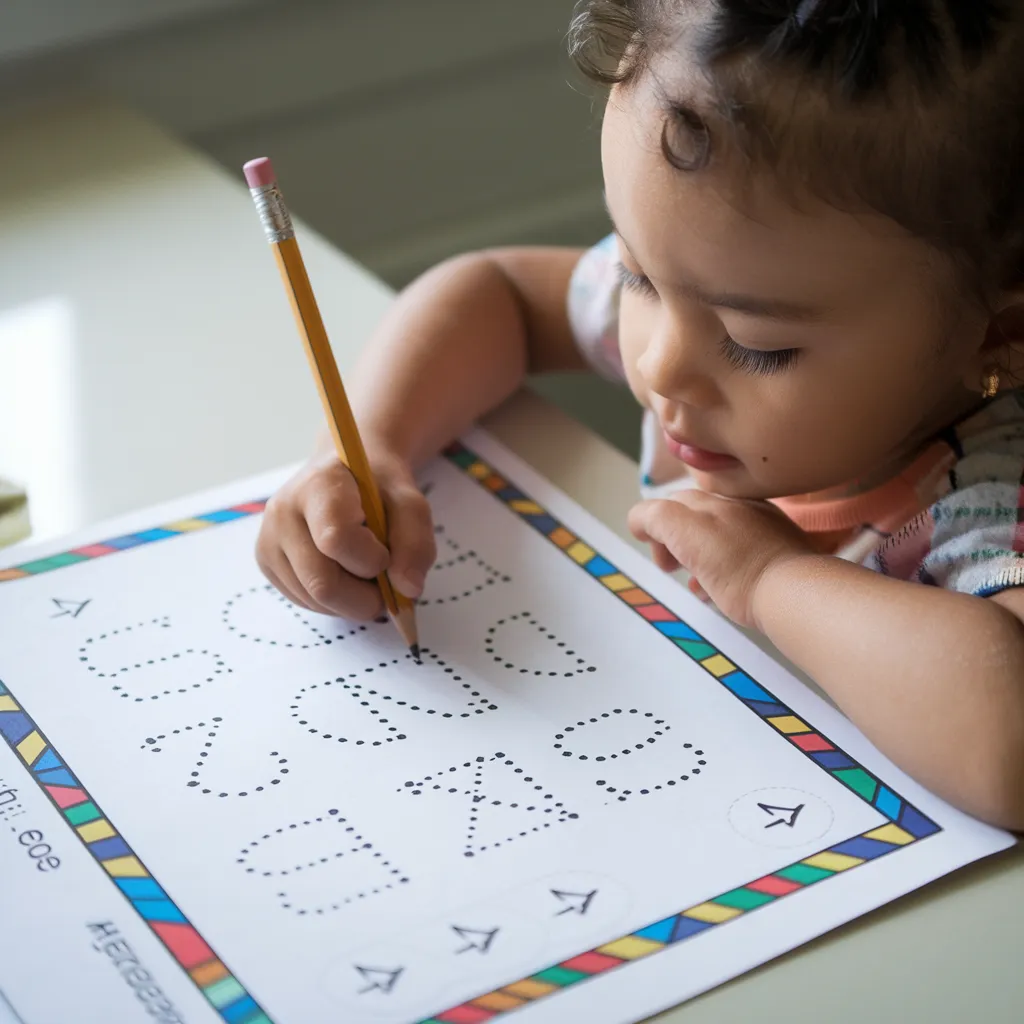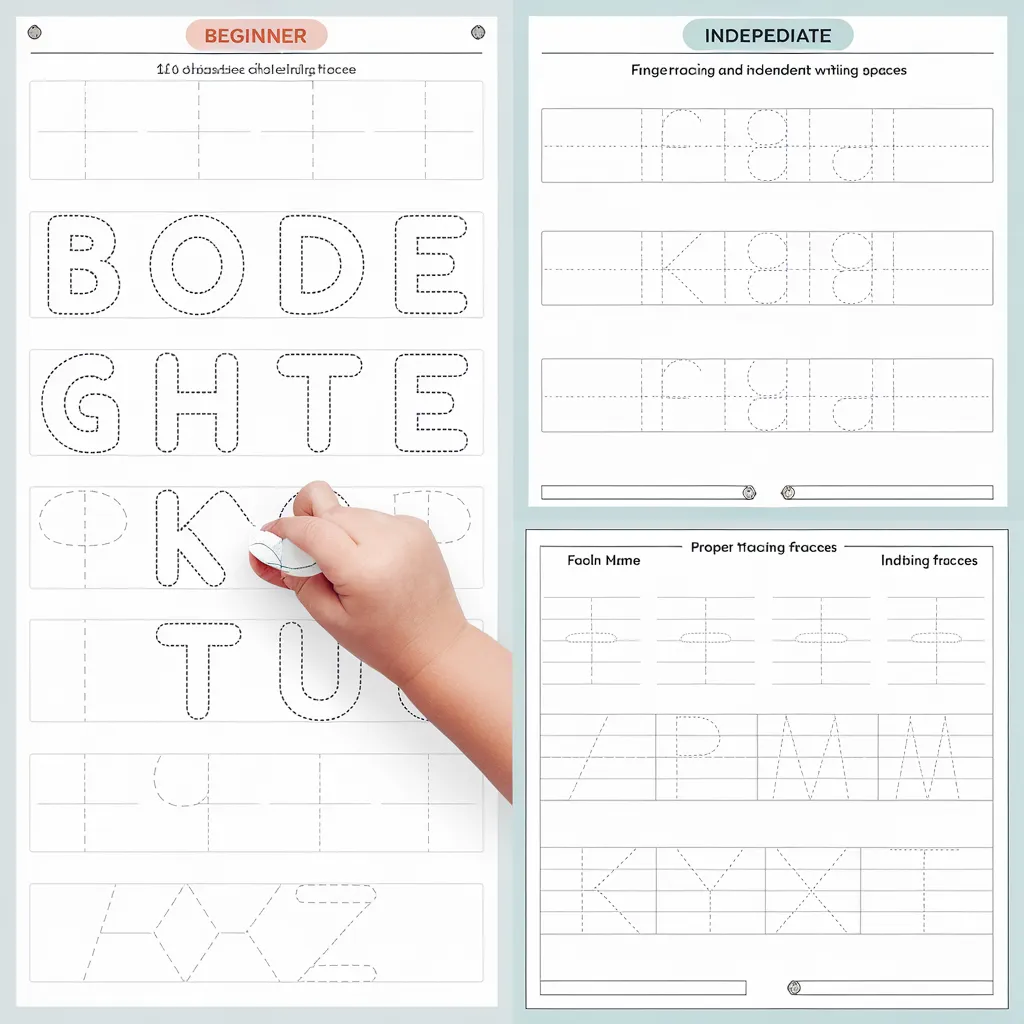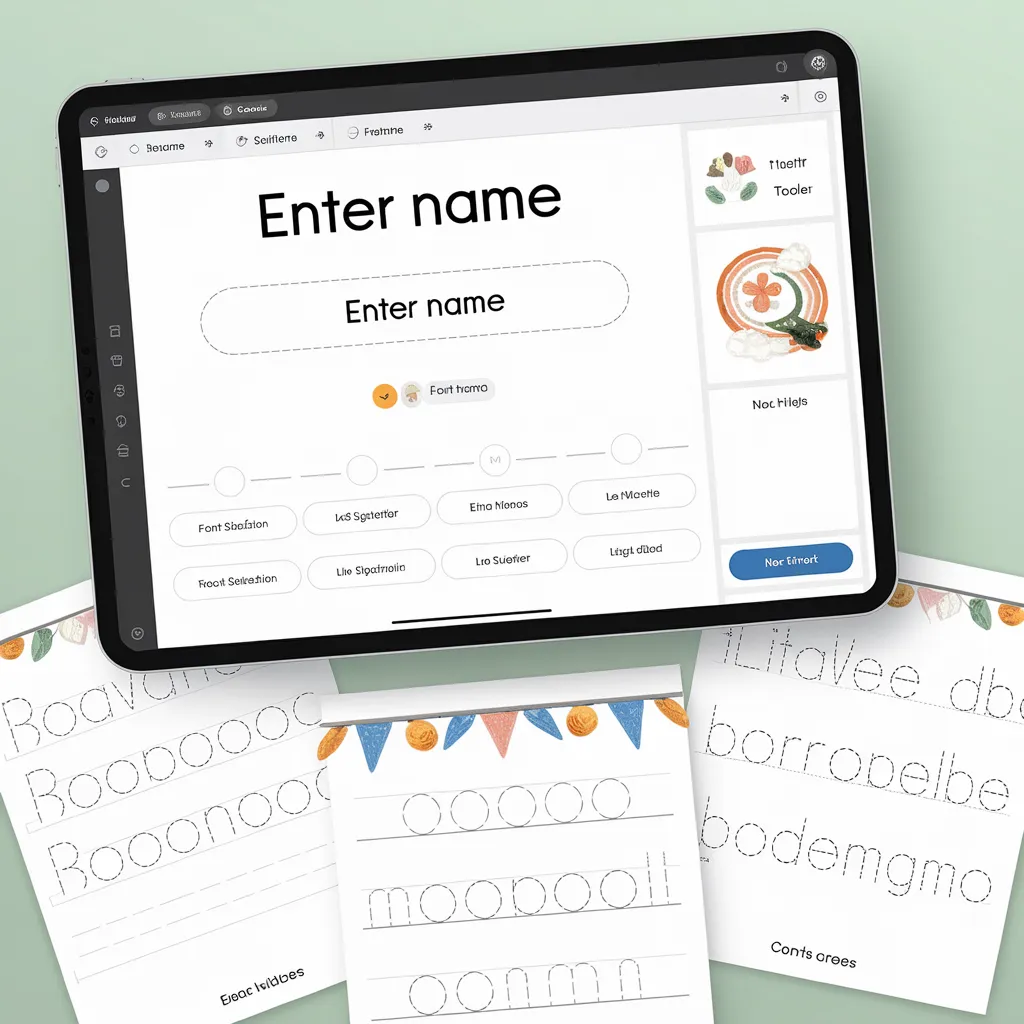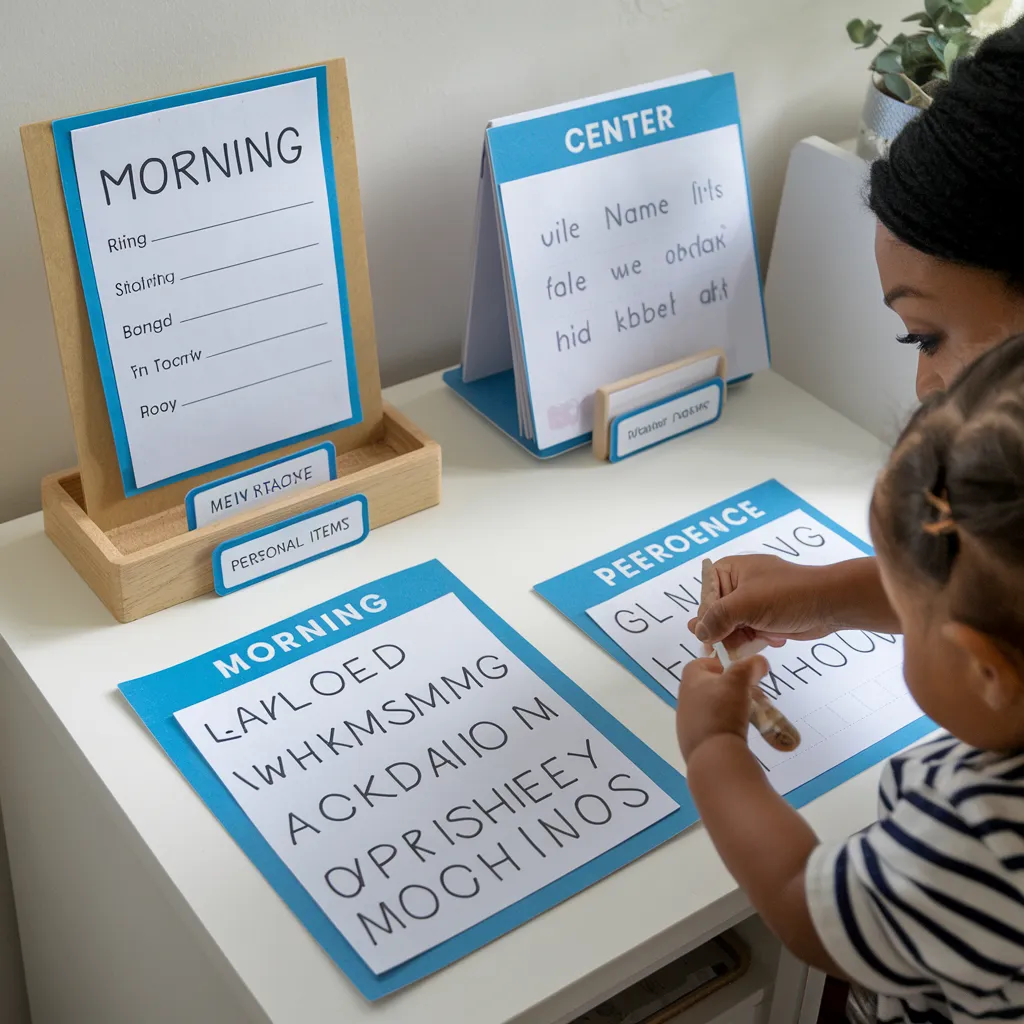Name tracing worksheets offer children their first meaningful connection to the world of writing by focusing on the most important word in their vocabulary—their own name. These specialized learning tools provide structured practice as children develop the fine motor skills and letter recognition needed for writing success. Whether you’re a preschool teacher introducing literacy concepts, a kindergarten educator reinforcing proper letter formation, or a parent supporting home learning, name tracing worksheets create personalized, engaging practice opportunities. By transforming abstract letter formation into personally relevant learning experiences, these worksheets build confidence and competence simultaneously. From basic dotted line templates to creative themed variations, name tracing worksheets establish the foundation for literacy while celebrating each child’s unique identity.

Educational Benefits of Name Tracing Worksheets
Name tracing worksheets contribute to multiple developmental domains beyond simple handwriting:
Literacy Foundation Development
- Letter recognition: Identifying letters within personal context
- Left-to-right progression: Establishing proper reading direction
- Letter formation: Learning correct stroke sequence and direction
- Name as sight word: Recognizing their name automatically
- Writing motivation: Building meaningful connection to print
Cognitive and Emotional Growth
Name tracing worksheets support whole-child development:
- Identity Reinforcement
- Building sense of self through name recognition
- Creating personal connection to written language
- Developing pride in name mastery
- Establishing classroom community through name activities
- Supporting cultural identity through name respect
- Executive Function Enhancement
- Developing focused attention during tracing tasks
- Building task persistence and completion
- Improving visual processing abilities
- Enhancing working memory for letter sequences
- Developing self-regulation when following prescribed paths
- Fine Motor Skill Development
- Strengthening hand muscles through repetitive tracing
- Refining pencil grip and pressure control
- Improving hand-eye coordination
- Developing wrist stability and finger dexterity
- Building writing stamina and control
Types of Name Tracing Worksheets by Developmental Stage

Different ages and skill levels benefit from specific worksheet designs:
Beginner Name Tracing Worksheets (Ages 3-4)
- Large Format Designs
- Extra-wide writing spaces for developing control
- Bold, dotted letters with clear starting points
- Limited to first name only for manageable length
- Simple, uncluttered page designs
- High contrast between tracing lines and background
- Multi-Sensory Support Options
- Textured letter paths with raised surfaces
- Finger tracing paths before pencil attempts
- Arrow cues for proper direction
- Color-coded starting points and direction paths
- Connect-the-dot formats for initial attempts
- Repetition Opportunities
- Multiple name examples on single sheet
- Gradually fading support across repetitions
- Consistent letter height guides
- Simple success celebration elements
- Space for independent attempts
Intermediate Name Tracing Worksheets (Ages 4-5)
- Progressive Challenge Formats
- Decreasing line width as control develops
- Combination of trace and write sections
- Introduction of last name practice
- Mixed support levels on single sheet
- Connection to letter sound awareness
- Thematic Integration Options
- Seasonal decorative elements
- Favorite character themed borders
- Topic-based learning extensions
- Holiday and celebration variations
- Curriculum connection opportunities
- Expanded Literacy Elements
- Letter identification activities alongside tracing
- First letter emphasis for phonemic awareness
- Letter counting and name length awareness
- Similar letter comparison opportunities
- Capital and lowercase practice options
Advanced Name Tracing Worksheets (Ages 5-6)
- Writing Refinement Focus
- Proper spacing between letters
- Consistent letter sizing practice
- Line placement with baseline guides
- Speed and fluency development
- Transition to independent writing
- Creative Extension Activities
- Name poetry and acrostic creation
- Name pattern recognition games
- Signature development practice
- Name art integration projects
- Cross-curricular name connections
- Comprehensive Naming Activities
- Full name practice (first, middle, last)
- Address writing extensions
- Family name practice
- Classroom friend name practice
- Alternative script introductions (cursive previews)
Creating Custom Name Tracing Worksheets

Personalization enhances the effectiveness of these learning tools:
Digital Creation Tools
- Online Worksheet Generators
- Customizable font selection for developmental appropriateness
- Adjustable line spacing and width options
- Thematic template choices
- Repetition and practice frequency settings
- Download and print-on-demand convenience
- Word Processing Adaptations
- Creating simple tables for letter placement
- Using dotted or dashed font options
- Developing custom templates for classroom use
- Creating progressive fading effects
- Designing thematic backgrounds and borders
Customization Strategies for Name Tracing Worksheets
- Personalization Elements
- Incorporating favorite colors or themes
- Adding personal interest graphics
- Creating meaningful context connections
- Designing difficulty levels based on individual needs
- Developing specific support for challenging letters
- Assessment Integration
- Creating progress monitoring formats
- Designing before-and-after samples
- Developing skill mastery checklists
- Building self-assessment opportunities
- Creating growth documentation systems
Implementation Strategies for Name Tracing Worksheets
Maximize effectiveness with these practical approaches:
Classroom Integration Methods
- Daily Routine Incorporation
- Morning sign-in activities
- Transition time skill practice
- Center-based learning stations
- Take-home practice connections
- Small group intervention opportunities
- Environmental Support Creation
- Name card models for reference
- Desktop name strips for guidance
- Name puzzles as supplementary practice
- Word wall name collections
- Name recognition games and activities
Home Practice Enhancement
- Family Involvement Approaches
- Creating consistent practice routines
- Developing name games for family participation
- Building connection between school and home practice
- Celebrating name mastery milestones
- Creating meaningful name writing opportunities
- Real-World Application Connections
- Signing greeting cards and artwork
- Labeling personal belongings
- Creating family message practice
- Developing environmental print awareness
- Building functional writing experiences
Troubleshooting Common Challenges with Name Tracing Worksheets

Address typical difficulties with these targeted strategies:
Motivation and Engagement
- Interest-Building Approaches
- Connecting to favorite characters or themes
- Creating game-based practice formats
- Developing progressive challenge systems
- Implementing celebration rituals for milestones
- Building meaningful application contexts
- Resistance Management Techniques
- Offering choice within structured options
- Creating brief but frequent practice opportunities
- Implementing movement breaks between attempts
- Developing multi-sensory alternatives
- Building success-guaranteed entry points
Technical Difficulties
- Letter Formation Challenges
- Creating targeted practice for difficult letters
- Developing letter family grouping practice
- Implementing proper pencil grip supports
- Creating clear starting point indicators
- Designing specific intervention for reversals
- Physical Development Support
- Implementing handwriting without tears approaches
- Creating proper seating and positioning systems
- Developing pre-writing warm-up activities
- Offering appropriate writing tool options
- Building hand strength through complementary activities
Conclusion
Name tracing worksheets provide a powerful entry point to literacy by combining personal relevance with foundational skill development. Through systematic, developmentally appropriate practice, children build not only the technical abilities needed for writing but also a meaningful connection to the world of print. By selecting or creating worksheets that match each child’s current abilities and gradually increasing challenges as skills develop, parents and educators can support confident, competent name writing. Start with basic tracing formats that offer substantial support, celebrate small improvements, and gradually progress toward independent name writing. Remember that consistent, positive practice creates both the physical muscle memory and emotional confidence that supports children’s emerging identities as writers and readers. With thoughtful implementation, these seemingly simple worksheets become powerful tools for early literacy development.
10 Powerful Ways How Tracing Helps Handwriting Development in Children
Frequently Asked Questions
At what age should children start using name tracing worksheets?
Most children are ready for introductory name tracing experiences between 3-4 years old, though individual development varies significantly. Look for readiness signs: interest in making marks on paper, ability to hold writing tools with some control, recognition of their printed name, and sustained attention for brief fine motor activities. Begin with highly supported formats featuring large, widely-spaced dotted letters and clear starting points. For younger children not yet ready for pencil-based worksheets, try finger tracing options or name recognition activities. Remember that name recognition typically develops before writing ability—ensure children can identify their name before expecting them to reproduce it. The goal is creating positive associations with name writing, so follow your child’s interest and ability levels rather than rigid age expectations.
How frequently should children practice with name tracing worksheets?
Quality matters more than quantity—brief, positive practice sessions yield better results than lengthy, frustrating ones. For preschoolers (3-4 years), limit formal tracing sessions to 3-5 minutes, potentially once or twice daily. Kindergarteners (5-6 years) can typically engage in 5-10 minutes of name writing practice. Watch for signs of fatigue or frustration like changing pencil grip, decreased attention, or expressions of frustration—these indicate it’s time to take a break. Consistency is key; short daily practice is more effective than occasional longer sessions. Integrate name tracing naturally into regular routines (morning sign-in, labeling artwork) rather than treating it exclusively as a separate drill. Remember that forced practice often creates resistance, while meaningful, contextual opportunities build positive writing associations.
What if my child’s name is very long or has unusual spellings?
For children with longer names, start with just their first name, or even just the first few letters until confidence develops. Consider creating nickname versions for initial practice if appropriate, gradually building to the full name. For names with unusual spellings or non-standard letter combinations, provide extra practice with those specific letter patterns, perhaps creating mini-worksheets focusing just on challenging portions. Emphasize the special, unique qualities of their name, building pride in its distinctiveness. Consider breaking longer names into manageable syllable chunks for practice before combining. For multilingual families, decide whether to prioritize one name version initially (if the name is written differently in different languages) or to introduce both simultaneously. The key is setting achievable goals that build confidence while honoring the child’s full identity.
How do I know when to move from tracing to independent name writing?
Look for these progression indicators: consistent success with tracing (staying on the lines, proper direction, correct letter formation); growing confidence shown through increased speed and decreased hesitation; spontaneous attempts to write name independently; accurate reproduction of most letters when given a model but no tracing guide; and expressed interest in writing without support. Create a gradual release of scaffolding—moving from full tracing lines to starting dots, then to a model at the top of the page, and finally to independent writing. Many worksheets offer this progression on a single page. Different letters may progress at different rates; children often master initial letters while still needing support for later ones. Remember that temporary regression during times of stress or when learning other challenging skills is normal and doesn’t indicate need for returning to full support.

Ping : 9 Surprising Benefits of Tracing for Children That Transform Development - smartkidsprintable